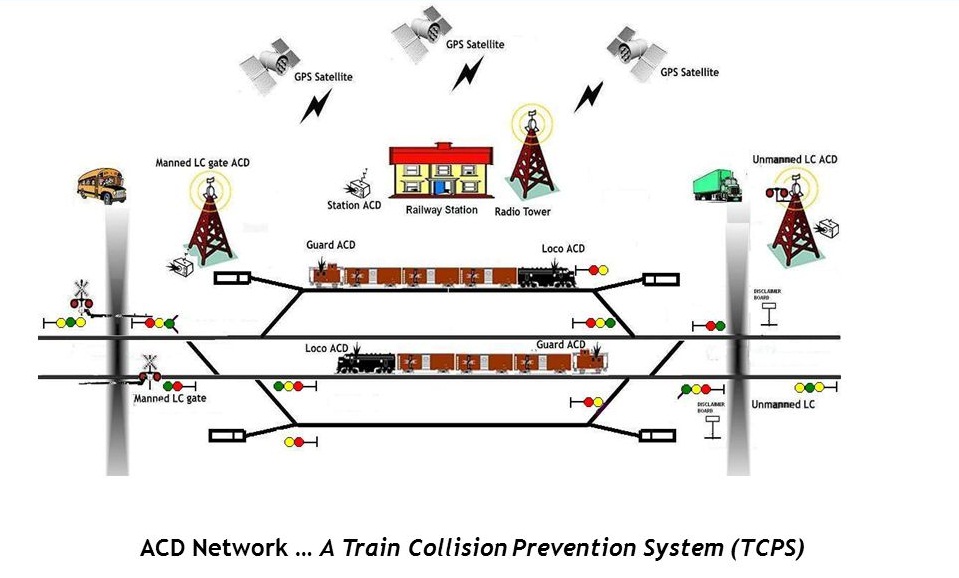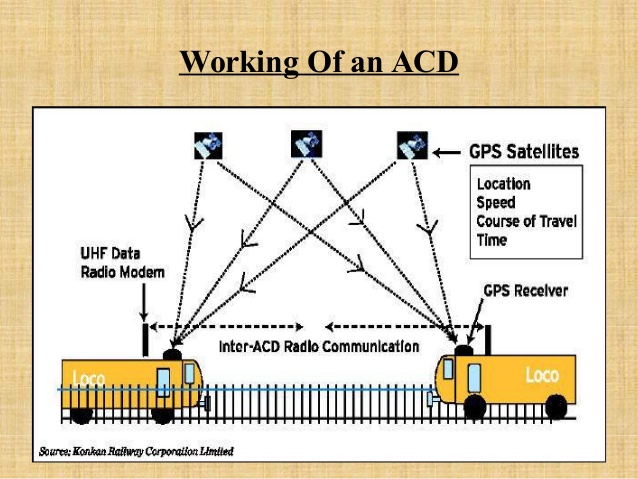
Introduction: Indian Railways is planning to upgrade its entire rail network with modern signals and anti-train collision system. Right now the signaling system on the vast Indian Railways network does not have the modern signaling system but Indian railways are in the process of upgrading the entire signaling system in the next few years with the Anti-collision technology.
With newer technologies being utilized, The cabinet cleared the plan to upgrade the IR Network to higher speeds such as the Mumbai-Delhi and Delhi-Howrah route to 160kmph which is targeted to be completed in the next four years The Indian Railways ambitious 508km Mumbai – Ahmedabad High Speed Train is also under construction now.
What is Anti-Collision Device: The ACD network is a train collision prevention system that was invented by Shri Rajaram Bojji and patented by Konkan Railway Corporation limited. It relies on on GPS satellite for position updates. They exchange information through radio frequency transmission to automatically brake and prevent collision. ACDs brakes to reduce the train speed to 15km/h if on approach.

Image credit: Ajaykumar A. Bhatt
Railways future with ACD: Indian Railways have successfully piloted ACDs in the Northeast Frontier Railway, covering 1736 kms of its broad gauge route. They are now installing the ACDs on 760kms of Konkan Railways. The on board train protection device, the first device designed by Konkan Railway with their technical partner Kernex Microsystems ltd, was installed throughout the Indian Railway Network.
A new ACD version-11, now called the Train Collision Avoidance System (TCAS) is under development by the Research Designs and Standards Organization (RDSO). ACD, which was more of a distributed system which acted independently has now a new successor : TCAS , which will be more of a centralized system where TCAS controls communication between the train and with the TDMA protocol. The TCAS under development is meant to be a vital safety system in Railways.

Image credit: Ajit Kumar
Deficiencies of ACD: The ACD system is based on GPS based positioning and track detection. This has inherent problems as with GPS service and course acquisition, the best possible horizontal accuracy is 10 m. This is inadequate for detection of rail tracks separated by a distance of 10–15 feet. ACD does not even have DGPS, differential GPS that gives accuracy close to 2.5 m, and hence had errors in track detection using their patented Deviation Count Theory that worked in block sections but failed in station sections.
The result was erratic breaking that disrupted train movements and proved to be ineffective. After seven or eight years of problems with the ACD system, RDSO, Lucknow drafted the Train Collision Avoidance System (TCAS) specifications with amendments. In 2012, the Ver3.1.1 specification was released after joint consultation with companies manufacturing signaling equipment for the Indian Railways. The ACD system used in Indian Railways had inherent problems in station sections due to their design, using GPS for unfeasible track detection.TCAS is now being developed in India by qualified companies, manufacturing railway safety systems selected by RDSO through an Expression of Interest (EOI). These companies include Kernex Microsystems; Medha servo drives Hyderabad, Invensys Bangalore, Siemens, HBL Power Systems Ltd Hyderabad and others.

Image credit: Konkan Railways
Conclusion: Sources stated that the TCAS would not only help avoid collisions due to human errors in signaling and invisibility of signals due to heavy rain or fog, but also alerts about fire on trains and warnings about damage to the tracks during natural calamities or sabotage.

